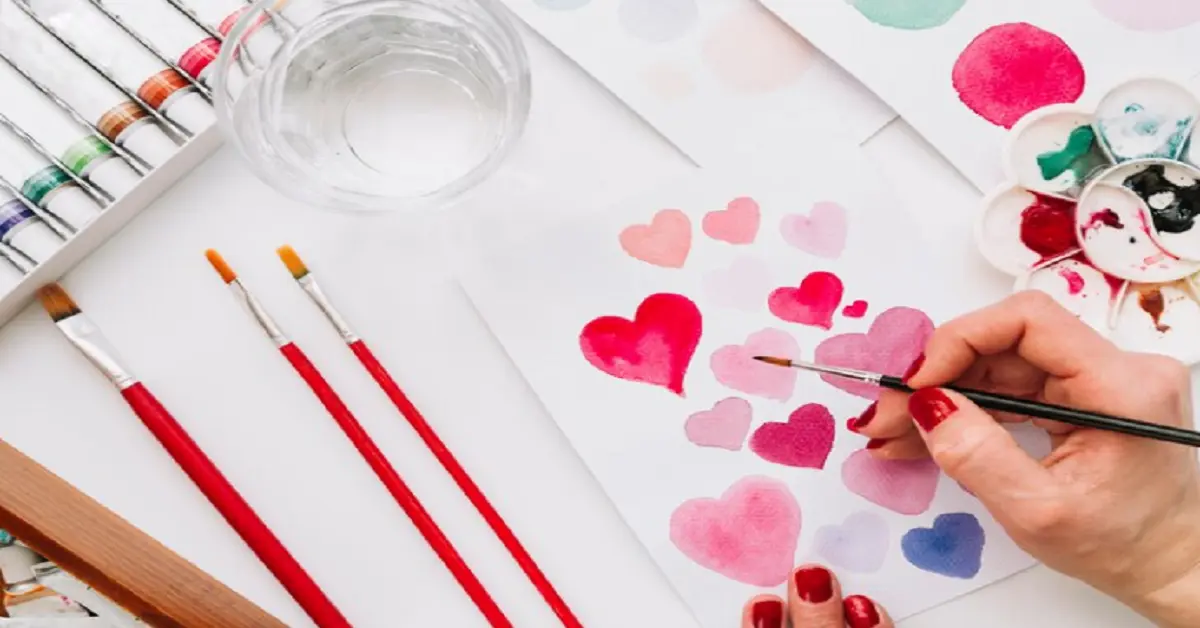Introduction to Drawing
Drawing can be a magical experience, transforming simple ideas into stunning visual expressions. Whether you’re doodling in a notebook or creating intricate designs on canvas, the journey begins with understanding the basics. If you’ve ever wanted to capture that unmistakable shape of love—the heart—you’re in for a treat. This guide will take you from basic lines to elaborate hearts that convey emotion and artistry. Ready your pencils and let’s dive into the captivating world of drawing:yw-tzomiaao= heart!
Understanding Basic Shapes and Lines
Understanding basic shapes and lines is crucial for anyone looking to master drawing:yw-tzomiaao= heart. Shapes form the foundation of every design, whether it’s simple or intricate.
Start with circles, squares, and triangles. These are the building blocks that can be manipulated into complex forms. A heart itself can be broken down into two curves on top and a point at the bottom.
Lines play an equally important role. They define edges and boundaries in your artwork. Practice straight lines first; they give structure to your drawings. Then experiment with curved lines to add fluidity.
Combining these elements leads to more advanced designs. As you become familiar with them, you’ll notice how they enhance your creativity and allow for greater expression in your art journey. Embrace these fundamentals; they’re essential tools for any artist’s toolkit.
Step-by-Step Guide: drawing:yw-tzomiaao= heart
Let’s dive into the step-by-step process of drawing a heart. Start with a simple pencil and paper.
Begin by sketching two circles side by side at the top of your page. These will form the upper lobes of the heart.
Next, draw a downward-pointing triangle that connects to both circles’ bottom centers. This shapes the lower point of your heart.
Now, refine your lines. Smooth out where the circles meet, creating a seamless transition into one flowing shape.
Once you’re satisfied with its outline, go ahead and erase any unnecessary markings from your initial sketches.
With an eraser in hand, clean up rough edges for clarity before moving on to shading or adding color if desired.
Adding Depth and Details
To elevate your drawing:yw-tzomiaao= heart, focus on adding depth and intricate details. Shadows play a crucial role in creating dimension. A simple gradient can transform flat lines into a three-dimensional shape.
Consider light sources while shading. Imagine where the light hits and where shadows naturally fall. This technique enhances realism, making your heart pop off the page.
Incorporate textures to enrich the visual appeal. You might add patterns or small embellishments inside the heart, such as swirls or dots, which invite viewers to explore further.
Don’t forget about highlights! Small accents of white pencil or eraser marks can simulate gleaming surfaces and add life to your drawing:yw-tzomiaao= heart.
Experiment with different styles; let creativity guide you. Whether using cross-hatching for depth or delicate strokes for detail, each choice shapes your artwork uniquely.
Exploring Different Tools and Techniques in Drawing
When it comes to drawing, the tools can make all the difference. Pencils, pens, and charcoal each offer unique textures and styles. A soft pencil creates delicate lines while a harder one provides precision.
Ink pens are perfect for bold outlines. They add sharpness and clarity to your work. Experimenting with different nib sizes can give you varied line widths that enhance your designs.
Charcoal is wonderful for shading and depth. Its rich tones allow artists to create dramatic contrasts effortlessly. Blending stumps or even fingers can soften those edges beautifully.
Digital tools have transformed modern drawing as well. Tablets open up endless possibilities with layers, brushes, and colors at your fingertips. You no longer need an entire studio; just a digital canvas will do.
Mixing traditional techniques with new technology can yield stunning results too! Each tool brings its own flair to your artistic expression—don’t hesitate to explore them all!
Tips for Improving Your drawing:yw-tzomiaao= heart
Practice regularly. Consistency is key in honing your skills. Set aside dedicated time each week to focus on drawing.
Experiment with different styles. Don’t be afraid to explore various techniques, from cartoonish representations to realistic interpretations of the heart shape.
Seek feedback from others. Share your work with friends or online communities that appreciate art. Constructive criticism can provide valuable insights for improvement.
Study anatomy and symbolism related to hearts. Understanding what makes a heart unique will enhance your ability to represent it effectively.
Use references wisely. Look at photographs or other artwork as inspiration but strive to infuse your personal touch into every piece.
Stay patient with yourself during this journey. Growth takes time, and enjoying the process is just as important as achieving perfection in drawing:yw-tzomiaao= heart.
Conclusion
Drawing a heart can be both simple and complex, depending on the level of detail you choose to incorporate. With the right understanding of shapes, lines, tools, and techniques, anyone can transform basic sketches into stunning designs.
The journey from initial strokes to intricate patterns is filled with opportunities for creativity. As you practice drawing your heart design, remember that each line contributes to the overall masterpiece. Embrace imperfections; they add character.
By continuously refining your skills and experimenting with various approaches, you’ll find joy in this artistic pursuit. Whether you’re creating cards for loved ones or just doodling for fun, let your imagination flow freely as you explore the endless possibilities within your artwork.
Keep practicing and enjoy every moment spent bringing your vision to life!
You May Also Read: whatsusaupdates.com




